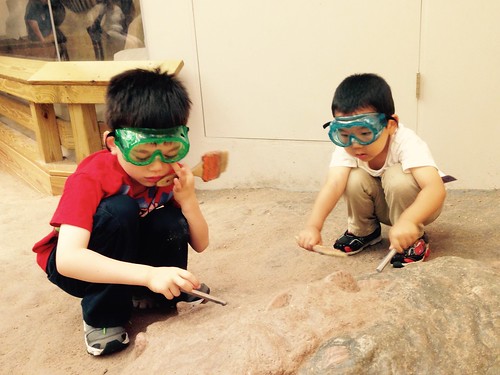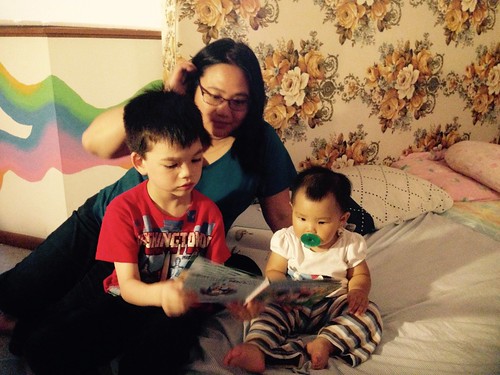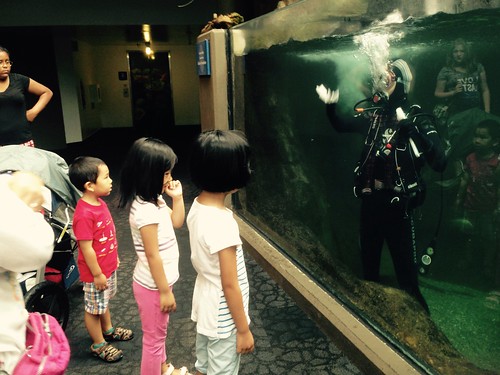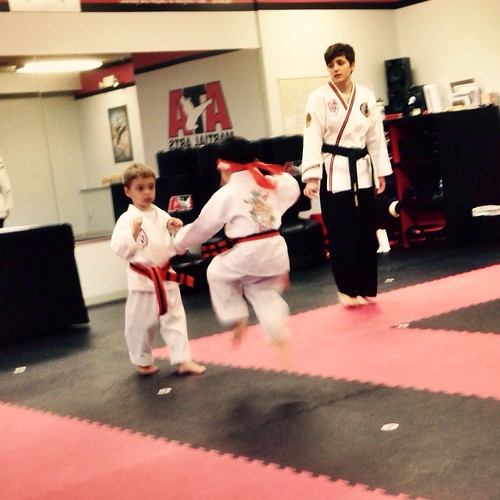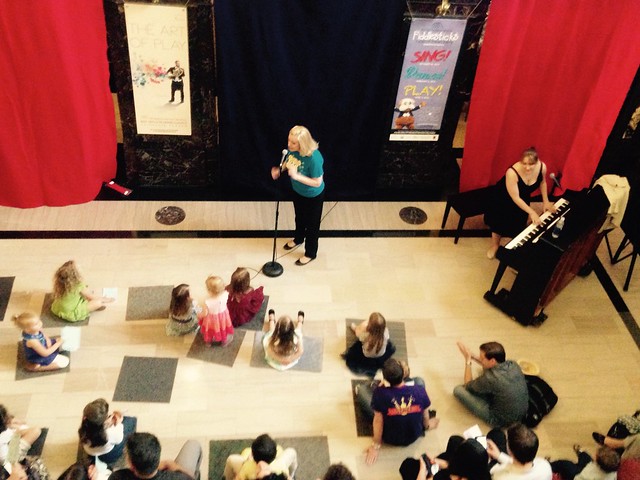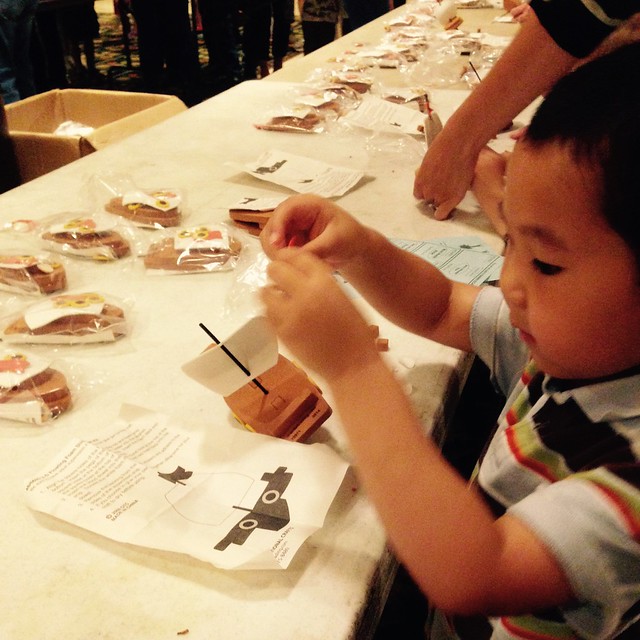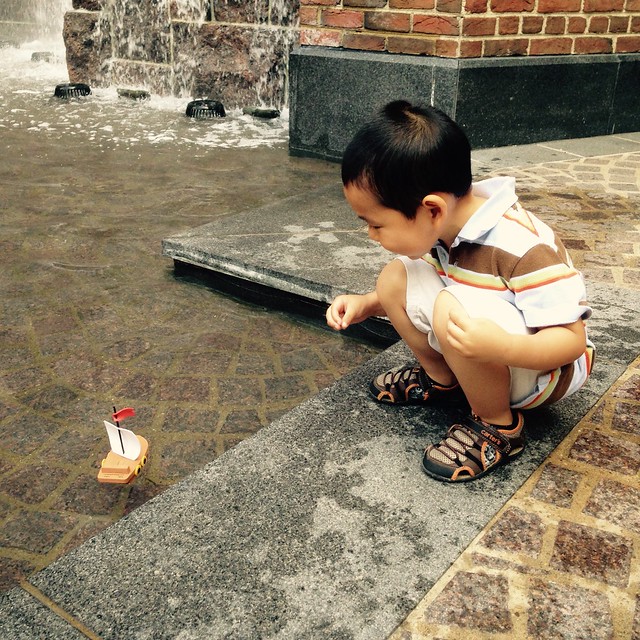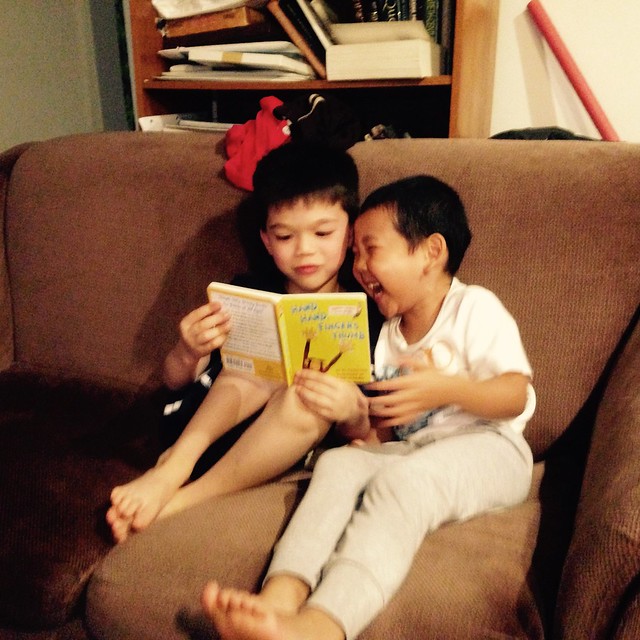 |
| Cousins reading and laughing (and definitely not settling down before bedtime) |
We covered many of our usual activities: playing with LEGO, reading books, going to the Carnegie Science Center and the Museum of Natural History.
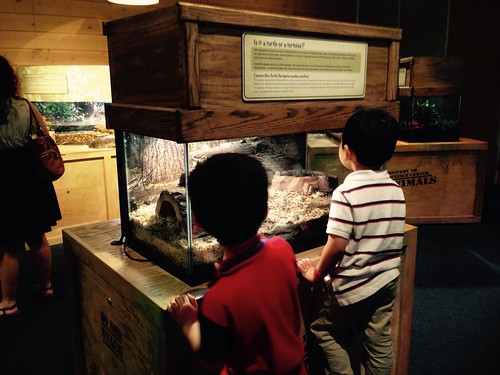 |
| There is a box turtle looking at us |
P' J was adamant the entire trip that he did not want a younger sister. He is just getting to that age where girls are not fun.
Our other opportunity to play host is a chinese family who has moved into the neighborhood for the summer. They have two young girls, so they look for things to do around the city. And we get to run into them in many of the family destinations.
We met each other at the zoo
We met each other at the zoo
 |
| Polar bear looking at two juvenile humans through the glass |
the museum of natural history and the science center. We enjoyed showing them how we maximize our enjoyment of these places. The other benefit of this is that T has other kids around close to his age who speak Chinese in normal conversation. We have seen the chinese kids in his daycare gradually stop using chinese, even the ones who go to chinese school, and all of the parents think about what to do about that. But having peers having fun in the language may help.
In other news, T achieved his yellow belt (in ATA Taekwondo, yellow is after orange which is after white).
One thing we are gratified by is that the school maintains individual standards, even at this age. They have a sense of what he is capable of, and hold him to it. So things that they may let slide with other 4-year olds, they don't let T get away with. (and this goes for testing too, I watched them make a group of 4/5 year olds repeat their forms during testing because that group could have done better) T responds as well. He is still too much in his own world to consider that he is being held to a higher standard. A funny, a couple of the moms commented to me that they point out T to their kids as an example of focusing during class.
A's milestone for this month is walking. She always gave the impression that she would have preferred to skip the crawling segment and go to walking, now she can walk reasonable reliably (i.e. in the toddler way of wobbling around trying to keep balance.) And she likes to practice following people around. It is very funny when T is trying to get away, and they go around in circles around the house.
Coming up, a couple more lazy months of summer as we look forward to T starting kindergarten in the fall.
